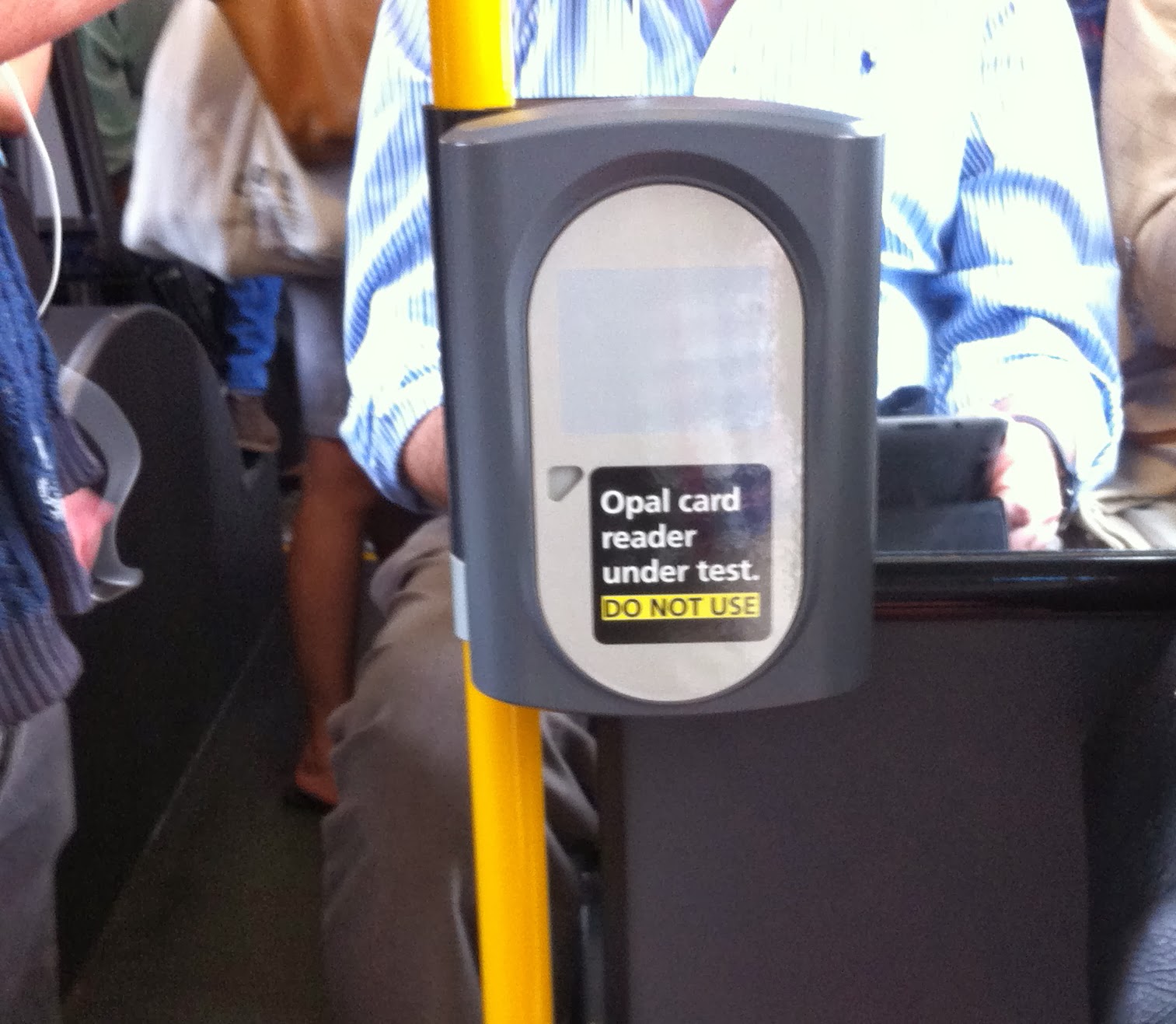 |
| Replica of The Thing |
The Carr government planned to have the electronic ticket readers in operation before the Olympics, so they would have predated the first application of remote toll collection - the EIS for the M7 Western Link was in January 2010 and it was not given approval, with modifications, until a year later. The company that got the contract, the Perth-based company ERG, was unable to fulfill the contract which was eventually cancelled.
 |
| Oyster (aka Opal) Card Reader |
This is really unfortunate because the technology can resolve congestion in bus routes in the CBD and ultimately save Public Transport users in Sydney tens of billions of dollars.
The article in the SMH by Jacob Saulwick refers to only roughly one in ten passengers boarding the 333 bus service using the Opal Card. Some commuters have discovered that from Campbell Parade in Bondi, a trip to Bondi Junction costs $3.50 using an Opal Card but a single trip using a TravelTen card costs $1.80. One stop closer to Bondi Junction from the terminus, the Opal price drops to $2.10. If you fail to tap off when alighting there can be a $5 penalty.
In the terminology of TfNSW's multi-million dollar signage the 333 service from Circular Quay to North Bondi is a "B" route and the sections are based on distance and not related to the Eastern Suburbs "T" service - unlike the TravelTen system brought in by competent state governments before O'Farrell. But before O'Farrell travellers did not know if they were getting onto a train, a bus or a ferry!
Ironically, I mentioned my experience with the Oyster Card in London in my letter to the Minister of Transport in April when expounding on what the tech guy at the "information session" would describe as "the power of pricing". London Transport has large concentric zones round the City of London. I had a weekly two-zone Oyster Card; the boundary between zone two and three passed midway through the main Olympic Stadium. I thought I could travel to the light rail station on the boundary then get a day ticket to travel the one extra stop to the Westfield Plaza, the closest you could get to the Olympic Complex - the largest British troop encampment outside of Afghanistan. Impossible; I had to buy two three-zone day tickets, costing more than four pounds in each direction.
Clearly my entreaties to the Minister have not had any effect, other than to turn the Deputy Director General TfNSW, Chris (Grid) Lock, into a recluse. I reiterated the arguments I put in my letter to the Minister in my submission to the EIS. It is now up to the assessment process.
I have written to Ministers only three times in my life and have made submissions to three Environmental Impact Statements. The arguments put have generally been acknowledged even if obliquely. But now we are dealing with bureaux set up and staffed by O'Farrell.
I will expound in this blog on the arguments in my submission.
No comments:
Post a Comment